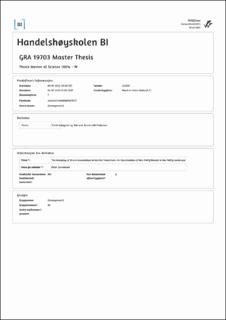| dc.description.abstract | This thesis aimed to examine a research gap within brand extensions to uncover the
impact of luxury value dimensions, presented as associations, on consumer attitudes
towards brand extensions from outside and into the FMCG market. Consumer
attitudes were measured by two dependent variables, purchase intent and willingness
to pay a price premium. Wherein, a reference product of higher quality is linked to a
brand extension of lower quality and intended for mass sales in another market. A
survey-based experiment was conducted with a questionnaire that was designed to
capture consumer responses in line with the study's chosen luxury value dimensions.
The findings provide evidence supporting significant differences in effect on
consumer attitudes across two product categories, edible and non-edible, and across
brand quality levels of high, medium, and low. Additionally, the most important
associations varied across product categories and brand quality levels. Overall,
examination of the results revealed edible brand extensions to elicit stronger
consumer attitudes, compared to non-edible brand extensions. On the other hand, the
standard deviation values for edible brand extensions also indicated greater variation
among the results. Moreover, seen from a managerial perspective, the findings offer
valuable insights for strategic decision making for various brands across product
categories and brand quality levels. Since leveraging specialized knowledge and
emphasizing luxury value dimensions can enhance product development, cost
effectiveness, marketing efforts, and the probability of brand extension success.
Nonetheless, the findings showcase the importance of fit between the reference
product and the brand extension, as it is crucial to avoid dilution effects that may
hamper the benefits gained from linking the brand extension to the reference product.
Hence, if there exists a substantial difference in quality, the managers must carefully
consider fit and alignment of brand extensions with the reference product. On the
other hand, aligning brand extensions with an adequate degree of fit and leveraging
the appropriate value dimensions of luxury to their respective brand quality and
product category, managers may enhance brand positioning, develop brand equity,
and achieve further managerial success. | en_US |
